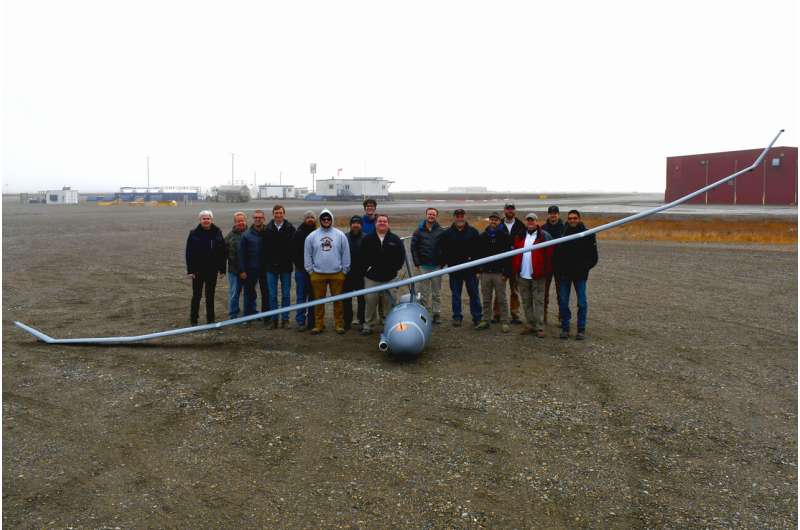
Following years of dedicated work with unmanned aerial vehicles (UAVs), NPS and Naval Research Laboratory (NRL) partners have successfully concluded the ultimate test of a nine-year continuum of research and development in one of the world's most challenging environments: the Arctic Circle.
The collaborative team integrated NPS' own cutting-edge flight-path planning software known as POTION (Path Optimization) with the Vanilla UAV, developed and operated by Platform Aerospace. This initiative pushed the boundaries of their research, subjecting the Vanilla-POTION combination to rigorous testing in the daunting North Slope of Alaska, making the best of a narrow weather window.
Remarkably, the outcomes of the Arctic flight in September surpassed all expectations, as well as numerous records set by Vanilla in previous missions. This achievement underscores the exceptional capabilities of the Vanilla-POTION combination and represents a milestone in advancing UAV technology for naval operations within the scope of the long-term partnership.
Leading NPS efforts on what he terms "energy-aware aerial flight" is NPS Associate Professor of Mechanical and Aerospace Engineering (MAE) Dr. Vladimir Dobrokhodov, who began at NPS as a postdoctoral fellow in 2001.
"A glider's efficiency is quantified by its judicious energy utilization, a stark contrast to the combat efficiency metrics applied to fighter aircraft. Similar to transport planes, gliders aim to traverse vast distances with minimal fuel consumption," explained Dobrokhodov. "Over a meticulous nine-year collaboration between NPS and NRL, innovative approaches have been developed to optimize efficiency of long endurance aircraft."
Back in 2014, Dobrokhodov worked alongside NRL's Dr. Dan Edwards and Dr. Richard Stroman to explore energy-aware flight research with a novel hybrid UAV called Hybrid Tiger that integrated hydrogen fuel cell, solar and atmospheric wind energy-harvesting technologies. The project spanned three years.
Central to the project's achievements was the development of optimal trajectory planning software emulating the energy-conserving flight patterns of migrating birds navigating atmospheric wind rivers.
In the realm of energy-efficient flight, characterized by low airspeeds and altitudes, susceptibility to the adverse effects of strong winds and icing is amplified, making flight-path planning extremely challenging for human operators. Mathematical optimization of routing becomes vital, necessitating a complex software solution that enables the aircraft to skillfully navigate through diverse and potentially hazardous weather conditions.
Close collaboration with MAE professors Mark Karpenko and Kevin Jones, researchers who have spent years in the area of flight efficiency and optimal control engineering, helped to advance the energy optimal approach to what is now POTION. The team developed the propulsion efficiency model of an aircraft to model the Vanilla UAV's fuel consumption and used machine learning to integrate that model into the algorithm for route optimization.
"Using neural networks to represent and quickly execute an otherwise complicated energy model was a key enabler for optimizing Vanilla's flight path," Karpenko said.
Provided by Naval Postgraduate School
Citation: Software helps unmanned aerial vehicles break records during Arctic test flight (2024, January 24) retrieved 24 January 2024 from https://techxplore.com/news/2024-01-software-unmanned-aerial-vehicles-arctic.html
This document is subject to copyright. Apart from any fair dealing for the purpose of private study or research, no part may be reproduced without the written permission. The content is provided for information purposes only.
